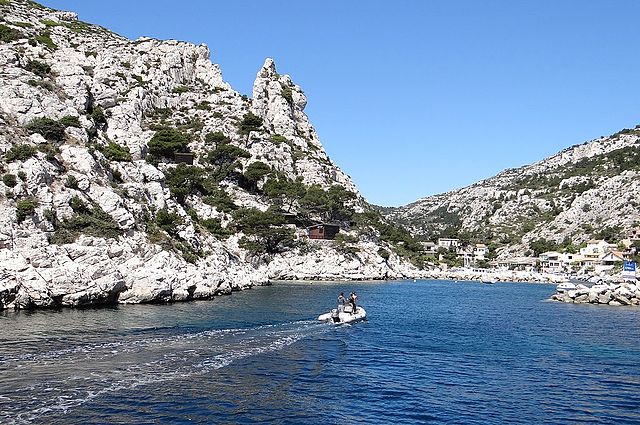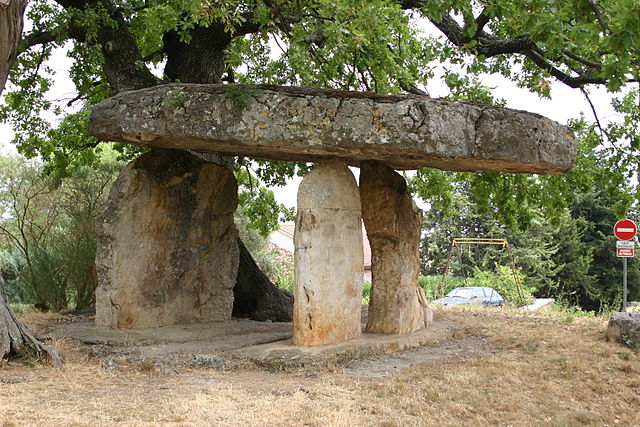Silvacane Abbey is a former Cistercian monastery in the municipality of La Roque-d'Anthéron, Bouches-du-Rhône, in Provence, France. It was founded in or around 1144 as a daughter house of Morimond Abbey and was dissolved in 1443; it ceased to be an ecclesiastical property in the French Revolution. The church was acquired by the French state in 1846, the remaining buildings not until 1949. It is one of the three Cistercian abbeys in Provence known as the "three sisters of Provence", the other two being Sénanque Abbey and Le Thoronet Abbey; Silvacane was possibly the last-established.
Silvacane Abbey church interior: simple ribbed vault at the crossing and pointed barrel vaulting beyond
Foliage motif on a pilaster inside church
Floral ornaments at an arch base (springer)
Exterior of the abbey church, Silvacane Abbey
Provence is a geographical region and historical province of southeastern France, which extends from the left bank of the lower Rhône to the west to the Italian border to the east; it is bordered by the Mediterranean Sea to the south. It largely corresponds with the modern administrative region of Provence-Alpes-Côte d'Azur and includes the departments of Var, Bouches-du-Rhône, Alpes-de-Haute-Provence, as well as parts of Alpes-Maritimes and Vaucluse. The largest city of the region and its modern-day capital is Marseille.
View across lavender field to Mont Ventoux
The historical province of Provence (orange) within the contemporary region of Provence-Alpes-Côte d'Azur in southeastern France
The entrance to the Cosquer Cave, decorated with paintings of auks, bison, seals and outlines of hands dating to 27,000 to 19,000 BC, is located 37 metres under the surface of the Calanque de Morgiou in Marseille.
A Bronze Age dolmen (2500 to 900 BC) near Draguignan








